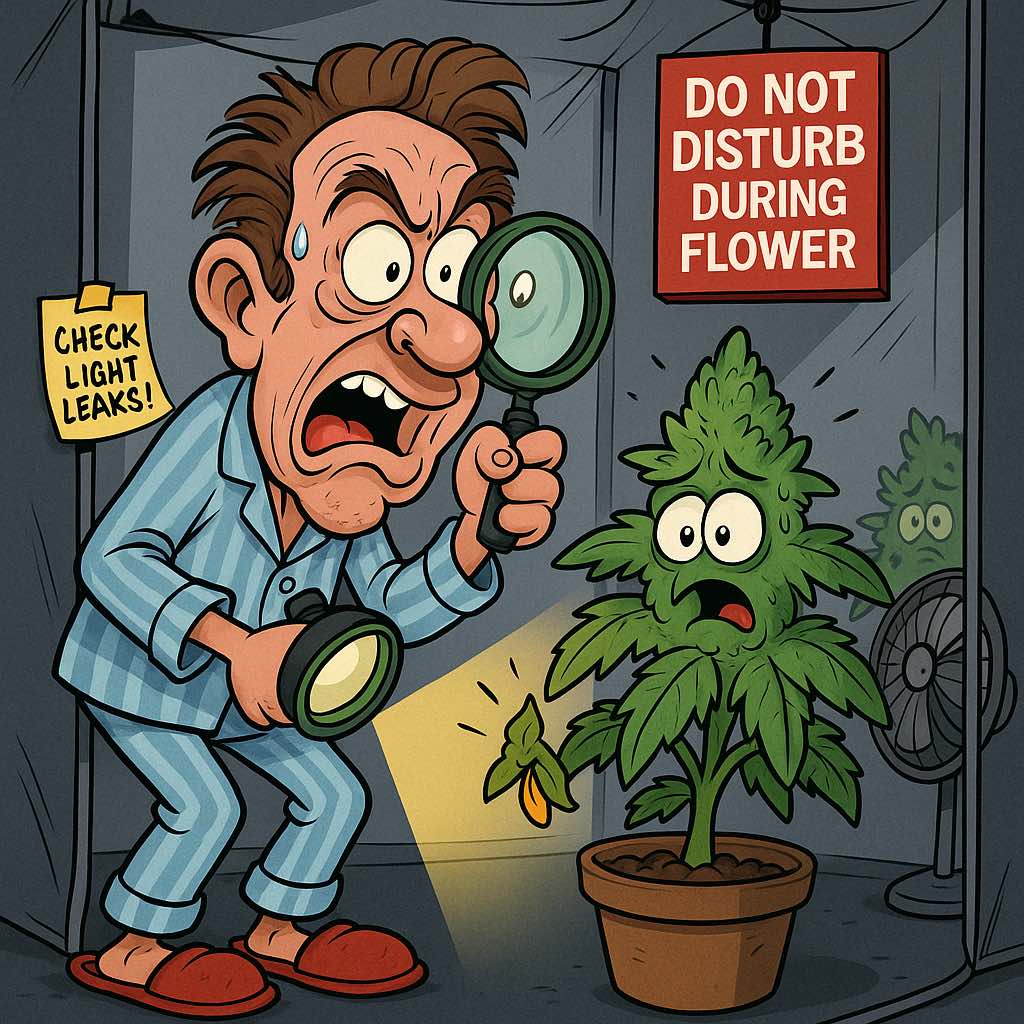
How to Avoid Hermaphrodites in Your Cannabis Grow
Imagine this: your plants are thriving, buds are stacking, and just when you’re feeling proud… you spot bananas—those dreaded pollen sacs—and realize you’ve got a hermie in the room. Cue the panic.
Hermaphroditism in cannabis can destroy your grow if left unchecked. But don’t worry—we’ve got your back. In this guide, we’ll explain why hermies happen, how to avoid them, and what to do if one sneaks into your grow.
What Is a Hermaphrodite Cannabis Plant?
A hermaphrodite (hermie) is a cannabis plant that develops both male and female reproductive organs. That means it can self-pollinate, leading to seedy buds, ruined yields, and weaker genetics in your crop.
There are two types of hermies:
- True Hermaphrodites – genetically inclined to produce both sexes.
- Stress-Induced Hermies – triggered by environmental or physical stress.
Avoiding them is all about prevention, awareness, and starting with stable genetics.
Top 10 Tips to Avoid Hermaphrodites
1. Start with Feminised, Stable Genetics
The #1 cause of hermies is unstable genetics. At Original Sensible Seeds, we work with elite breeders and test every line for stability. Buy once, grow with confidence.
2. Avoid Light Leaks
Even small amounts of light during the dark cycle can stress your plants and trigger hermaphroditism—especially during flowering. Always check your grow room for pinhole leaks or LED indicators.
3. Maintain Consistent Light Schedules
Flipping lights on or off at the wrong time, or having timers fail, can confuse your plants and cause hormonal stress. Use reliable timers, and double-check them often.
4. Don’t Over-Stress Your Plants
Extreme stress—like snapping stems, overfeeding, underwatering, or major environmental swings—can cause some plants to flip. Treat your grow with love and consistency.
5. Keep Temperatures Stable
Avoid extreme heat or cold. Sudden temperature shifts (especially during lights off) can cause stress-induced hermies. Ideal range? 20–28°C (68–82°F).
6. Monitor Humidity Levels
High humidity during flowering increases mold risk and overall stress. Keep RH around 40–50% during bloom for best results.
7. Don’t Let Your Plants Flower Too Long
If left too long in the flowering stage, especially after peak ripeness, some plants may hermie as a last-ditch effort to reproduce. Always harvest on time.
8. Be Gentle with Pruning & Training
Techniques like LST, topping, or super cropping are great—but don’t overdo it. Stress from aggressive pruning during flowering can backfire.
9. Check Your Plants Regularly
Early detection is key. Inspect your plants every few days during bloom. Look for signs like pollen sacs (balls), or “bananas” (stamens) forming in buds.
10. Cull Hermies Immediately
If you spot a hermaphrodite, isolate or remove it ASAP to protect the rest of your crop. One rogue plant can ruin an entire room if left unchecked.
Why This Matters
Hermaphrodites can tank your yield, reduce potency, and create a bunch of low-quality seeds. For home growers and pros alike, avoiding hermies saves time, stress, and money.
When you start with top-shelf seeds, maintain stable grow conditions, and inspect your crop regularly, you massively reduce the risk.
Final Word
Hermies aren’t just a rookie mistake—they can sneak up on anyone. But with the right genetics and grow habits, they’re totally preventable.
At Original Sensible Seeds, we work hard to bring you stable, feminised, high-performance genetics you can rely on. So you can grow with peace of mind—and harvest buds, not seeds.






